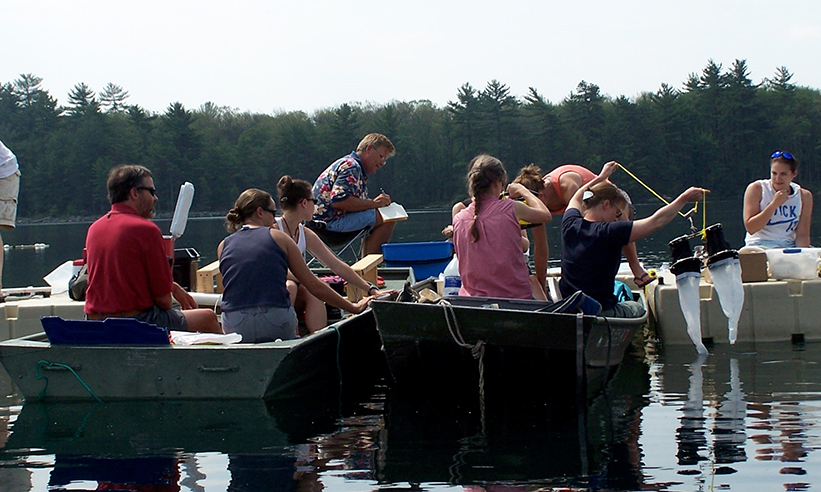
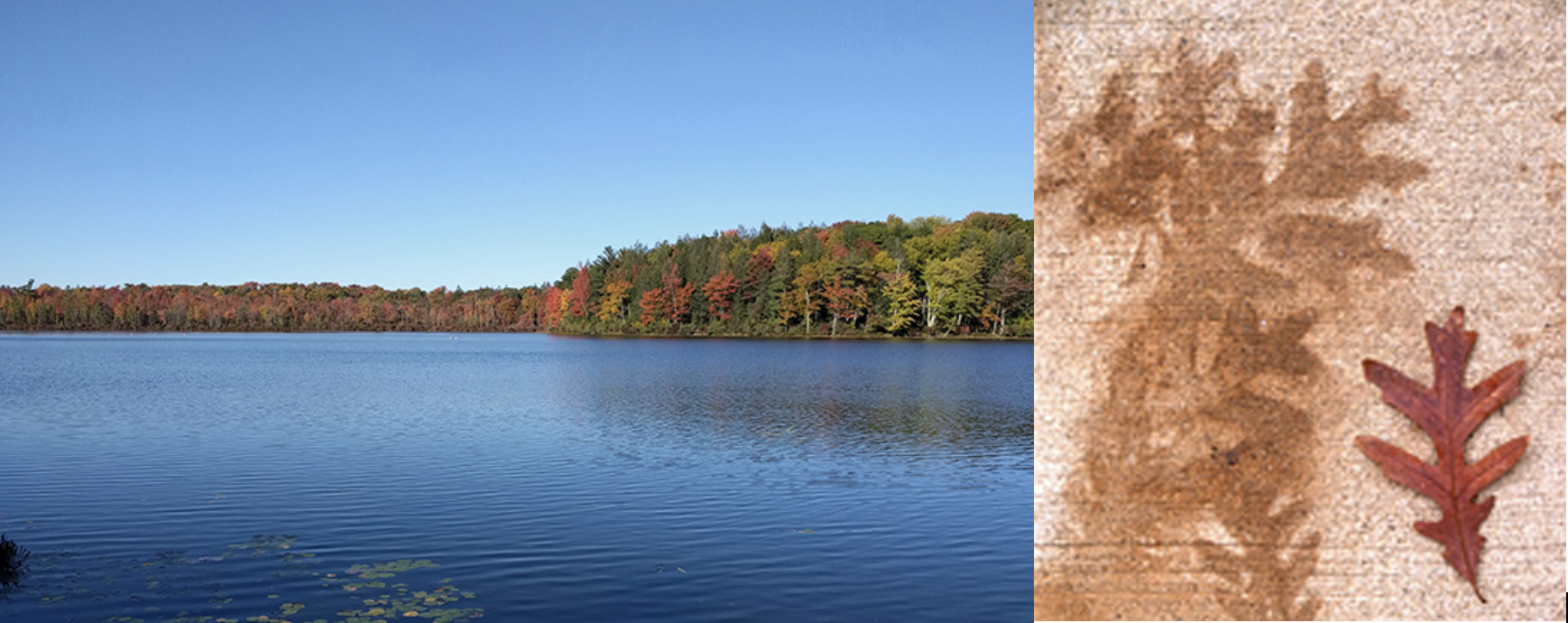
Craig Williamson's OPUS grant will provide new insights on effects of browning in lakes worldwide
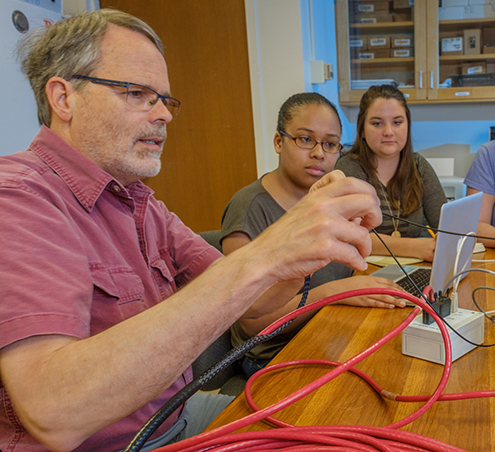
Craig Williamson with students (photo by Scott Kissell).
By Susan Meikle, university news and communications
Craig Williamson, Ohio Eminent Scholar of Ecosystem Ecology and Miami University professor of biology, has built one of the world’s largest research databases on water transparency in lakes.
His Global Change Limnology Laboratory database is created from 30 years of research on lakes in the Pocono Mountains and around the world.
It is used by Williamson and other scientists to help understand how water transparency affects lake ecosystems and how lakes will respond to environmental and climate change.
“Water of higher clarity adds economic, recreational and other value to lake ecosystems and the services they provide," Williamson said.
Yet, lakes worldwide are threatened with decreasing clarity — or browning — due in part to increased dissolved organic matter inputs.
NSF OPUS grant: Creating a new understanding of lake ecosystems
Williamson’s long-term and in-depth research on lake water transparency has been recognized with an Opportunities for Promoting Understanding Through Synthesis (OPUS): Core Research Synthesis grant for nearly $200,000 from the National Science Foundation (NSF).
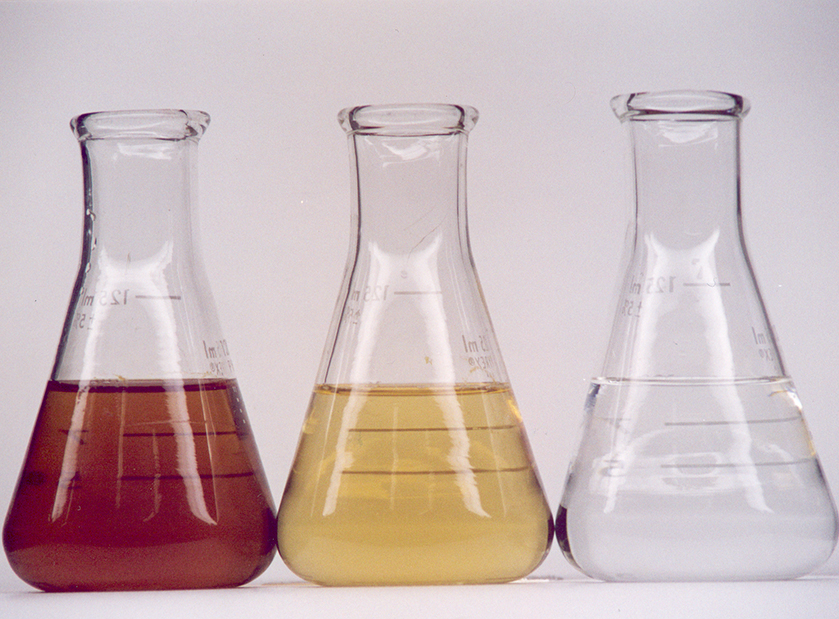
Like steeped tea: flasks show different amounts of dissolved organic matter that can turn lake water brown (photos courtesy Williamson).
He is one of only seven scientists nationwide to receive an NSF OPUS award for research starting in 2020. He is only the second researcher at Miami to receive the award (Mike Vanni, professor of biology, received an OPUS: Mid-Career Synthesis grant in 2010).
Williamson’s OPUS project will provide new insights and understanding into how dissolved organic matter (DOM) influences long-term changes in water clarity, and the resulting consequences for lake ecosystems.
“One of the major changes in lakes in recent decades is up to a doubling or more of DOM, leading to browning of many inland waters in North America, Europe and beyond," he said.
Recent increases in precipitation extremes — droughts and floods — and associated browning of lakes requires integrating browning and the optical properties of lakes into the traditional model of understanding lake ecosystems, according to Williamson.
The project will integrate the most geographically extensive and site intensive database in existence on ultraviolet radiation (UV), optical properties and associated experimental data on about 400 lakes worldwide.
It will also incorporate 30 years of data from a set of three core study lakes in Pennsylvania’s Pocono Mountains, including Lake Lacawac, where Williamson has conducted research since 1990.
NSF LTREB grant: Adding to the database on lake browning
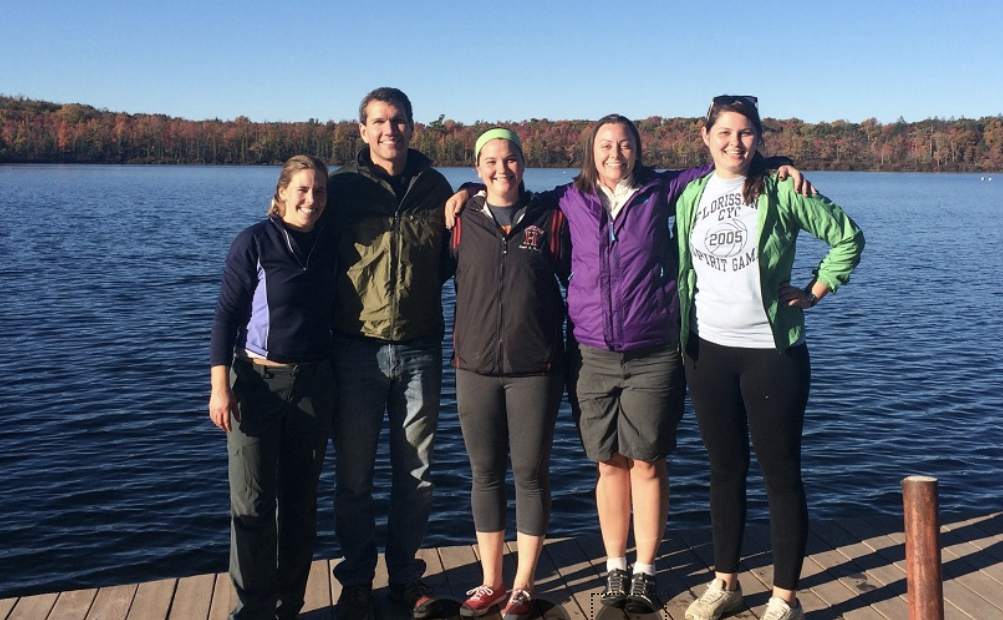
Williamson's former students at Lake Lacawac: Jennie Brentrup (Ph.D. '17), Kevin Rose (Ph.D. '11) and current doctoral students Nicole Berry (M.S. '18), Lauren Adkins Knose and Rachel Pilla (M.S. '15).
Through a recent NSF Long Term Research in Environmental Biology (LTREB) grant, Williamson and his co-investigators will expand the 30-year database for Lake Lacawac.
Their research will examine how browning may reduce oxygen concentrations in lakes. Low oxygen can cause an increase in algae blooms and alter the habitat availability for fish, algae and zooplankton.
Co-principal investigators on the NSF LTREB grant are Thomas Fisher and Jing Zhang, associate professors of statistics at Miami.
The collaborative grant also includes Kevin Rose (Miami Ph.D. '11), assistant professor of biological science and the Frederic R. Kolleck ’52 Career Development Chair in Freshwater Ecology at Rensselaer Polytechnic Institute. Rose conducted his doctoral research with Williamson.
Williamson has been continuously funded by the NSF since 1990 for his research on lakes and UV transparency.
- More than 60 undergraduate and graduate students have been involved with his long-term research since he joined Miami in 2005.

Williamson and students collecting samples from Lake Lacawac.
Lakes as sentinels of climate change
His projects take students all over the world from regions in the U.S. such as northeastern Pennsylvania, Alaska, Lake Tahoe and the Beartooth Mountains, to the Canadian Rockies, Argentina and New Zealand.
"We view lakes as sentinels, integrators and regulators of environmental change, with an emphasis on deciphering the most valuable sentinels of climate change." Williamson said.
Inland and coastal ecosystems, and freshwater quality and quantity in particular are threatened by increases in extreme events ranging from floods to droughts,” Williamson said.
“Resolving these threats cannot be accomplished with traditional experimental approaches. Advanced, automated sensors collecting massive amounts of high frequency data over long time periods are required to resolve both abrupt changes as well as long-term trends.”
Lake Lacawac is part of the Lacawac Sanctuary Field Station and Environmental Education Center in Pennsylvania, and is also part of Miami’s Center for Aquatic and Watershed Sciences (CAWS).
